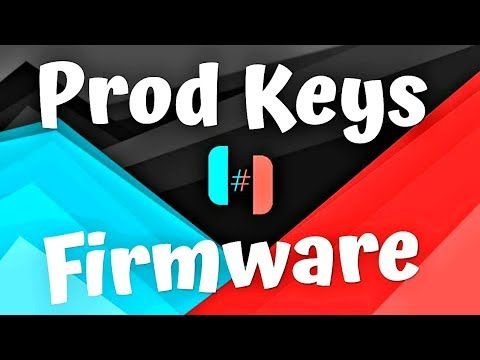Which Arduino to Buy For Beginners?
Choosing your first Arduino can be a daunting task. With so many models to choose from, what do you need to consider when making your decision? In this article, we’ll explore the different types of Arduino models and help you decide which one is right for you. Whether you’re a beginner just getting started with electronics or an experienced hobbyist, we’ve got the perfect Arduino for you! So let’s get started. First, let’s take a look at the different types of Arduinos that are available on the market today. There are four basic categories: consumer, low-cost, midrange, and high-end.
1. What Arduino Is and What It Can Be Used For
Arduino is an electronic platform that can be used for various purposes, from home automation to simple data gathering. It consists of a microcontroller and a software development environment that allows users to create programs for the microcontroller in order to control different aspects of their projects. Arduino also has a large user community that provides support and shared libraries of code, making it an ideal option for beginners and experienced users alike.
2. The Different Types of Arduino Boards Available
There are four different types of Arduino boards available. They include (in order of best-suited to least suited): professional, consumer, low-cost and midrange. However, we should note that the board you select will ultimately depend on your project’s requirements and your own technical expertise. It’s also important to remember that there are various other Arduino variants available as well (such as clones), but these should be researched and purchased with caution.
1. Professional Boards:
These typically require more power than lower-cost models and are designed for advanced users only. They also come with a larger form factor due to additional components required for operation such as voltage regulators and capacitors. The following Arduino boards fall into this category: Leonardo (image below) – A microcontroller board based on the ATmega32u4 running at 5V/16MHz; 16x digital input/output pins (of which 6 can be used as PWM outputs and 6 as analog inputs), 6x analog inputs, a 16MHz crystal oscillator, micro USB connection; flash memory – 32 KB. Arduino Due (image below) – A microcontroller board based on the Atmel SAM3X8E ARM Cortex-M3 CPU running at 3.3 V/84MHz; 54 digital input/output pins (of which 12 can be used as PWM outputs), 12 analog inputs, 4 UARTs (hardware serial ports), an 84 MHz clock, USB OTG capable (but not enabled), 2KB of RAM, 512 KB of Flash memory and an SD card slot.
2. Consumer Boards:
These offer lower performance than professional boards but also come at
A microcontroller board based on the Atmel SAM3X8E ARM Cortex-M3 running at 3.3V/84MHz; 54 digital input/output pins (19 of which can be used as PWM outputs), 12 analog inputs, 4 UARTs (hardware serial ports), 2 TWIs (hardware I2C port), a 84 MHz clock, USB OTG capable connection. Flash memory 256 KB .
3. Consumer Arduinos:
What they are and what they’re good for
Uno The first type is the Arduino Uno, which stands out as one of the most popular Arduinos on the market today. It includes 14 digital input/output pins that can be used for various purposes, including controlling LEDs or reading switches. All 14 pins operate at 5 volts and have ~40mA of current capability but some pins can provide up to 20mA of output current while others can only provide a maximum input amount of 40 mA. It also has six analog inputs that can measure values between 0 and 5 volts. Additionally, there are six interrupt pins that can be used to sense external information such as buttons or switches.
3. How To Choose The Right Arduino Board For Your Needs?
If you’re looking to start learning about Arduino, or you want to try a new project, it’s important to select the right Arduino board for your needs. There are a variety of Arduino boards available on the market, each with its own set of features and capabilities. In this blog post, we’ll discuss the different types of Arduino boards and help you choose the right one for your project. We’ll also provide some tips for getting started with Arduino.
If you’re like me, you probably have a drawer (or maybe 10) full of old/unused electronic devices. Gadgets that were amazing when they came out but are now practically useless because some newer – better – model has come along . But what if, rather than simply throwing them in the trash can or recycling bin, you could actually repurpose these electronic devices to solve a whole range of new problems? And what if this was as simple as hooking up a few wires and uploading some code? That’s where Arduino comes in.
4. Where to Buy Arduino Boards and Accessories?
Arduino boards are a staple for tech enthusiasts and hobbyists alike. They can be used for all sorts of projects, from simple mega-projects to more everyday tasks. So, where should you go to buy an Arduino board and the necessary accessories? The answer is Robocraze! We carry a wide range of Arduino boards and accessories, as well as other components perfect for your next project. Plus, we offer unbeatable prices and excellent customer service. Visit our website today to learn more!
Wrapping it up:
So, if you are a beginner and want to buy your first Arduino, the Uno would be a great choice. But if you are looking for something with more features, the Mega may be better suited for you. Whichever Arduino you choose, Robocraze is here to help get you started on your journey into the world of robotics and DIY! If you have any questions about which Arduino is best for beginners or anything else related to Arduinos, please don’t hesitate to contact us – we would love to hear from you!






